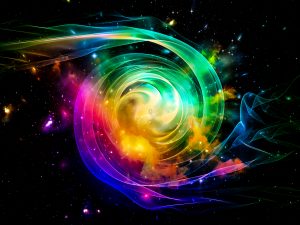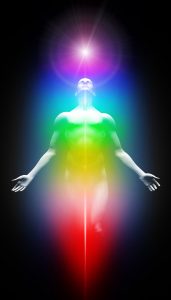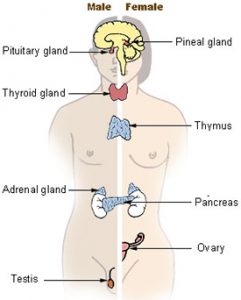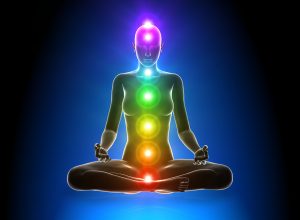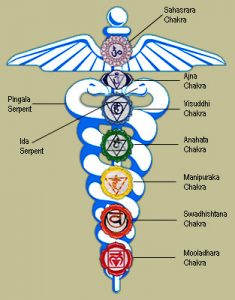What is IoT?
IoT is here. It's real. It's inevitable. We are just at the beginning of the Internet of Things and it will be huge.
Infographic - What exactly is the Internet of Things?
"The possible applications of the
Internet of Things are more or less endless. Basically any device or
product can be made ‘smart’ when several sensors are added and the
device can connect to the Internet. Throw in some smart algorithms and
the data can be analyzed and provide insights to the user as well as the
device itself. With so many possibilities, cheap infrastructure and
high demand it is very likely that we will see an explosion of IoT
startups in the coming years" ~ Mark van Rijmenam.
“Internet of Things (IoT) enables the objects in our environment to become active participants, i.e., they share information with other members of the network or with any other stakeholder and they are capable of recognizing events and changes in their surroundings and of acting and reacting autonomously in an appropriate manner. In this context the research and development challenges to create a smart world are enormous. A world where the real, digital and the virtual are converging to create smart environments that make energy, transport, cities and many other areas more intelligent.
“Internet of Things (IoT) enables the objects in our environment to become active participants, i.e., they share information with other members of the network or with any other stakeholder and they are capable of recognizing events and changes in their surroundings and of acting and reacting autonomously in an appropriate manner. In this context the research and development challenges to create a smart world are enormous. A world where the real, digital and the virtual are converging to create smart environments that make energy, transport, cities and many other areas more intelligent.
The concept goal of the Internet of Things is to enable things to be connected anytime, anyplace, with anything and anyone ideally using any path/ network and any service. Internet of Things is a new revolution of the Internet. Objects make themselves recognizable and they obtain intelligence thanks to the fact that they can communicate information about themselves and they can access information that has been aggregated by other things. For example - alarm clocks will go off early if there’s traffic; plants will communicate to the sprinkler system when it’s time for them to be watered; running shoes communicate time, speed and distance so that the wearer can compete in real time with people on the other side of the world; medicine containers tell your family members if you forget to take the medicine. All objects can play an active role thanks to their connection to the Internet." ~ Ovidiu Vermesan et al.
Enabling technologies for the Internet of Things such as sensor networks, RFID, M2M, mobile Internet, semantic data integration, semantic search, IPv6, etc. are considered in and can be grouped into three categories (DuPress):
(i) technologies that enable “things” to acquire contextual information,
(ii) technologies that enable “things” to process contextual information, and
(iii) technologies to improve security and privacy.
Turning Data into Wisdom
From Data to Wisdom
Credit: Gene Bellinger, Durval Castro and Anthony Mills - systems-thinking.org
Redrawn by Peter James Thomas
IoT, Industry 4.0, Web 3.0 and IoE Credit: Gene Bellinger, Durval Castro and Anthony Mills - systems-thinking.org
Redrawn by Peter James Thomas
Four phases of Industrialization (IoT and Industry 4.0)
Figure credit: SapHanaTutorial
Figure credit: SapHanaTutorial


Source: IoE CISCO
IoT Applications
The sky is the limit in terms of IoT applications.

Battling urban gridlock
Figure credit: Dupress
Key feature of digital age transportation systems
Figure credit: Dupress
Figure credit: Dupress
Potential applications of the IoT are numerous and diverse, permeating into practically all areas of every-day life of individuals, enterprises, and society as a whole (Source: IoT Cluster Book).
Smart Cities
Smart Cities
- Smart Parking: Monitoring of parking spaces availability in the city.
- Structural health: Monitoring of vibrations and material conditions in buildings, bridges and historical monuments.
- Noise Urban Maps: Sound monitoring in bar areas and centric zones in real time.
- Traffic Congestion: Monitoring of vehicles and pedestrian levels to optimize driving and walking routes.
- Smart Lightning: Intelligent and weather adaptive lighting in street lights.
- Waste Management: Detection of rubbish levels in containers to optimize the trash collection routes.
- Intelligent Transportation Systems: Smart Roads and Intelligent
- Highways with warning messages and diversions according to climate conditions and unexpected events like accidents or traffic jams.
Smart Environment
- Forest Fire Detection: Monitoring of combustion gases and preemptive fire conditions to define alert zones.
- Air Pollution: Control of CO2 emissions of factories, pollution emitted by cars and toxic gases generated in farms.
- Landslide and Avalanche Prevention: Monitoring of soil moisture,vibrations and earth density to detect dangerous patterns in landconditions.
- Earthquake Early Detection: Distributed control in specific places of tremors.
Smart Water
- Water Quality: Study of water suitability in rivers and the sea for fauna and eligibility for drinkable use.
- Water Leakages: Detection of liquid presence outside tanks and pressure variations along pipes.
- River Floods: Monitoring of water level variations in rivers, dams and reservoirs.
Smart Metering
- Smart Grid: Energy consumption monitoring and management.
- Tank level: Monitoring of water, oil and gas levels in storage tanks and cisterns.
- Photovoltaic Installations: Monitoring and optimization of performance in solar energy plants.
- Water Flow: Measurement of water pressure in water transportation systems.
- Silos Stock Calculation: Measurement of emptiness level and weight of the goods.
Security & Emergencies
- Perimeter Access Control: Access control to restricted areas and detection of people in non-authorized areas.
- Liquid Presence: Liquid detection in data centers, warehouses and sensitive building grounds to prevent break downs and corrosion.
- Radiation Levels: Distributed measurement of radiation levels in nuclear power stations surroundings to generate leakage alerts.
- Explosive and Hazardous Gases: Detection of gas levels and leakages in industrial environments, surroundings of chemical factories and inside mines.
Retail
- Supply Chain Control: Monitoring of storage conditions along the supply chain and product tracking for traceability purposes.
- NFC Payment: Payment processing based in location or activity duration for public transport, gyms, theme parks, etc.
- Intelligent Shopping Applications: Getting advice at the point of sale according to customer habits, preferences, presence of allergic components for them or expiring dates.
- Smart Product Management: Control of rotation of products in shelves and warehouses to automate restocking processes
Logistics
- Quality of Shipment Conditions: Monitoring of vibrations, strokes,container openings or cold chain maintenance for insurance purposes.
- Item Location: Search of individual items in big surfaces like warehouses or harbours.
- Storage Incompatibility Detection: Warning emission on containers storing inflammable goods closed to others containing explosive material.
- Fleet Tracking: Control of routes followed for delicate goods like medical drugs, jewels or dangerous merchandises.
Industrial
- M2M Applications: Machine auto-diagnosis and assets control.
- Indoor Air Quality: Monitoring of toxic gas and oxygen levels inside chemical plants to ensure workers and goods safety.
- Temperature Monitoring: Control of temperature inside industrial and medical fridges with sensitive merchandise.
- Ozone Presence: Monitoring of ozone levels during the drying meat process in food factories.
- Indoor Location: Asset indoor location by using active (ZigBee) and passive tags (RFID/NFC).
- Vehicle Auto-diagnosis: Information collection from CanBus to send real time alarms to emergencies or provide advice to drivers.
Smart Agriculture
- Wine Quality Enhancing: Monitoring soil moisture and trunk diameter in vineyards to control the amount of sugar in grapes and grapevine health.
- Green Houses: Control micro-climate conditions to maximize the production of fruits and vegetables and its quality.
- Meteorological Station Network: Study of weather conditions in fields to forecast ice formation, rain, drought, snow or wind changes.
- Compost: Control of humidity and temperature levels in alfalfa, hay, straw, etc. to prevent fungus and other microbial contaminants.
Domotic & Home Automation
- Energy and Water Use: Energy and water supply consumption monitoring to obtain advice on how to save cost and resources.
- Remote Control Appliances: Switching on and off remotely appliances to avoid accidents and save energy.
- Intrusion Detection Systems: Detection of window and door openings and violations to prevent intruders.
- Art and Goods Preservation: Monitoring of conditions inside museums and art warehouses.
eHealth
- Fall Detection: Assistance for elderly or disabled people living independent.
- Medical Fridges: Control of conditions inside freezers storing vaccines, medicines and organic elements.
- Sportsmen Care: Vital signs monitoring in high performance centers andfields.
- Patients Surveillance: Monitoring of conditions of patients inside hospitals and in old people's home.
- Ultraviolet Radiation: Measurement of UV sun rays to warn people not to be exposed in certain hours.
IoT and Community Wisdom (Source: IoT Cluster Book)
People live in communities and rely on each other in everyday activities. Recommendations for a good restaurant, car mechanic, movie, phone plan etc. were and still are some of the things where community knowledge helps us in determining our actions.
While in the past this community wisdom was difficult to access and often based on inputs from a handful of people, with the proliferation of the web and more recently social networks, the community knowledge has become readily available - just a click away.
Today, the community wisdom is based on conscious input from people, primarily based on opinions of individuals. With the development of IoT technology and ICT in general, it is becoming interesting to expand the concept of community knowledge to automated observation of events in the real world.
People live in communities and rely on each other in everyday activities. Recommendations for a good restaurant, car mechanic, movie, phone plan etc. were and still are some of the things where community knowledge helps us in determining our actions.
While in the past this community wisdom was difficult to access and often based on inputs from a handful of people, with the proliferation of the web and more recently social networks, the community knowledge has become readily available - just a click away.
Today, the community wisdom is based on conscious input from people, primarily based on opinions of individuals. With the development of IoT technology and ICT in general, it is becoming interesting to expand the concept of community knowledge to automated observation of events in the real world.
IoT Challenges
“While ICT offers opportunities like a platform for freedom of speech, social contact and enhanced democratic accountability, there are also ethical problems online: for example important questions like privacy and data protection. As ICT becomes ever more important, pervasive and useful, we need to raise and discuss these ethical question.
The Internet of Things promises to bring smart devices everywhere, from the fridge in your home, to sensors in your car; even in your body. Those applications offer significant benefits: helping users save energy, enhance comfort, get better healthcare and increased independence: in short meaning happier, healthier lives. But they also collect huge amounts of data, raising privacy and identity issues.” ~ Neelie Kroes
The Internet of Things promises to bring smart devices everywhere, from the fridge in your home, to sensors in your car; even in your body. Those applications offer significant benefits: helping users save energy, enhance comfort, get better healthcare and increased independence: in short meaning happier, healthier lives. But they also collect huge amounts of data, raising privacy and identity issues.” ~ Neelie Kroes
"ICT revolutions since the invention of the first single-chip microprocessor in 1971 have transformed the way we live, work and do business. By giving autonomy to objects, and by blurring the line between bits and atoms, the Internet of Things will produce another quantum leap forward on both the technological and societal levels by erasing boundaries between information entities and moving the reality across traditional legal, business, social and cultural concepts towards a single environment. The scale of the challenge is unprecedented." ~ Gérald Santucci
Some Research Challenges
- Absolutely safe and secure communication with elements at the network edge
- Energy saving robust and reliable smart sensors/actuators
- Technologies for data anonymity addressing privacy concerns
- Dealing with critical latencies, e.g. in control loops
- System partitioning (local/cloud based intelligence)
- Mass data processing, filtering and mining; avoid flooding of communication network
- Real-time Models and design methods describing reliable interworking of heterogeneous systems (e.g. technical / economical/ social / environmental systems).
- Identifying and monitoring critical system elements
- Detecting critical overall system states in due time
- System concepts which support self-healing and containment of damage; strategies for failure contingency management
- Technologies supporting self-organisation and dynamic formation of structures / re-structuring
Internet of Things (IoT) - We Are at the Tip of An Iceberg from Dr. Mazlan Abbas
Resources and References
Resources and References










